Geostationary Direct TV satellite
This is a Direct TV satellite imaged from in town. The first image used a star as the align point for the sub frames. This satellite is geostationary so as the Earth turns, the satellite moves in relation to the background stars. Each dot of the satellite moving is from a one second sub frame. The couple of places there is a dot missing, is where the Meade Envisage software tossed out a frame due to windy conditions - that frame being blurred.
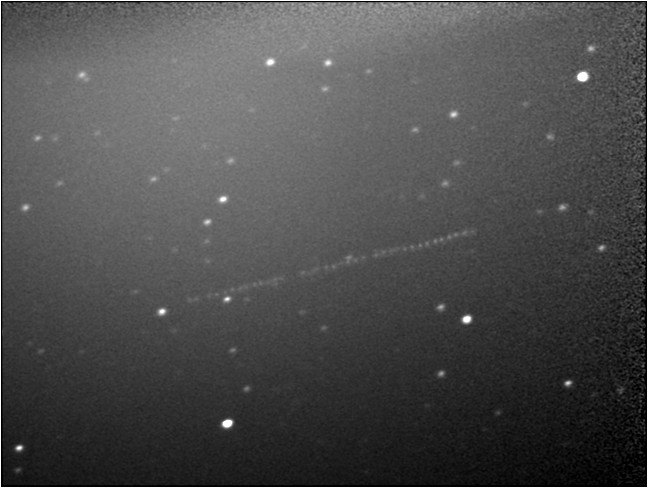
| Image by | Dennis Wigley |
| Date taken | 03/01/08 |
| Location taken | in town Oklahoma City, Okla. |
| Exposure time | 36 x 1s = 36 sec total |
| Imaging camera | Meade DSI pro |
| Imaging scope | Meade 60mm Polaris with .5 focal reducer = 350 mm = F 3.5 |
| Guide camera | None |
| Guide scope | None |
| Mount | Meade NGC-60 |
The image below tracked the satellite by using the satellite as the align point, so the stars moved across the image and the satellite is stationary.
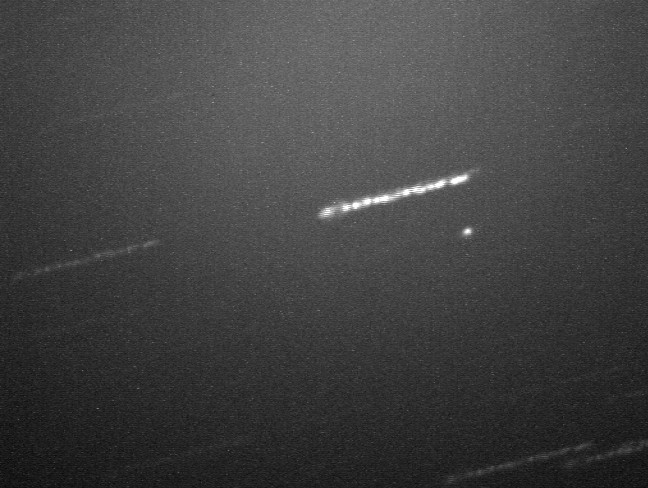
| Image by | Dennis Wigley |
| Date taken | 03/02/08 |
| Location taken | in town Oklahoma City, Okla. |
| Exposure time | 20 x 1s = 20 sec total |
| Imaging camera | Meade DSI pro |
| Imaging scope | Meade 60mm Polaris with .5 focal reducer = 350 mm = F 3.5 |
| Guide camera | None |
| Guide scope | None |
| Mount | Meade NGC-60 |
M82
Irregular galaxy in Ursa Major
M82 is nearer the Earth's axis than M42 and does not drift as fast.
This was another that I was able to see the galaxy core (live) while taking repeated 1second images in focus mode.
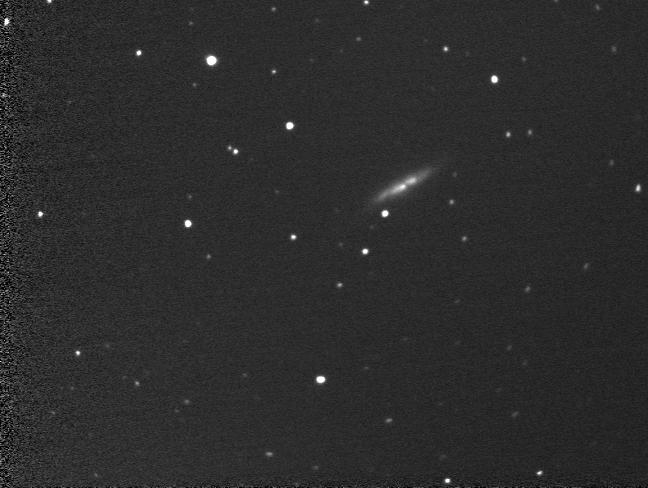
| Image by | Dennis Wigley |
| Date taken | 03/02/08 |
| Location taken | Owl Creek near Wayne, Okla. |
| Exposure time | 105 x 1s = 1 min 45 sec total |
| Imaging camera | Meade DSI pro |
| Imaging scope | Meade 60mm Polaris with .5 focal reducer = 350 mm = F 3.5 |
| Guide camera | None |
| Guide scope | None |
| Mount | Meade NGC-60 |
M81
M81 is much nearer the Earth's axis and does not drift as fast as M42. This allow longer stacks without re-pointing the setup. The DSI pro is sensitive enough that I was able to see the galaxy core (live) while taking repeated 1second images in focus mode. That made pointing the scope fairly easy.
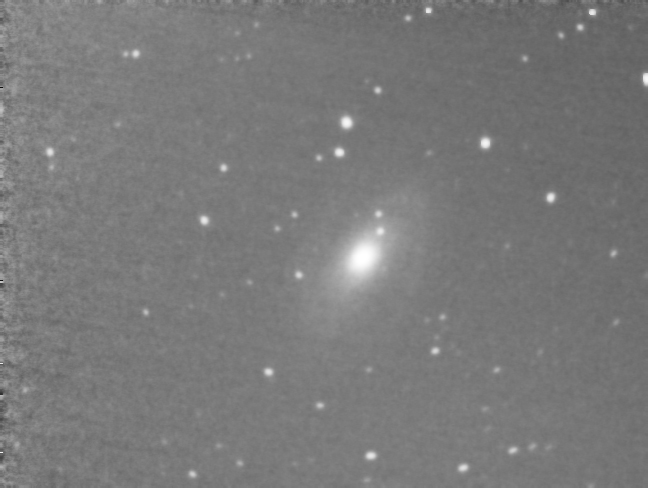
The picture below the same as above just with the histogram stretched farther.
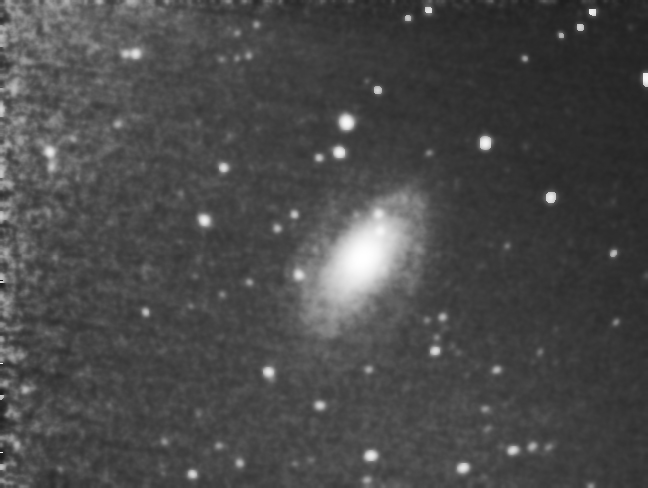
| Image by | Dennis Wigley |
| Date taken | 03/01/08 |
| Location taken | Owl Creek near Wayne, Okla. |
| Exposure time | 110 x 1s = 1 min 50 sec total |
| Imaging camera | Meade DSI pro |
| Imaging scope | Meade 60mm Polaris with .5 focal reducer = 350 mm = F 3.5 |
| Guide camera | None |
| Guide scope | None |
| Mount | Meade NGC-60 |
M42
This was the 1st object taken by with this setup. Started with one of the brighter deep space objects.
Pointed the setup so that M42 would drift through the field of view. Took three sets of sub frames stacked while drifting. Those three sets were aligned and stacked together. I processed one version so the faint outer regions showed well. Then another version was processed for the core of the nebula. The version that was processed for the outer regions had the core blown out (too bright), so I used a mask to remove the blown out core. Then I merged the version processed for the core with the version that had the core cut out and outer regions showing. The image below is the result of that merging of the differently processed versions
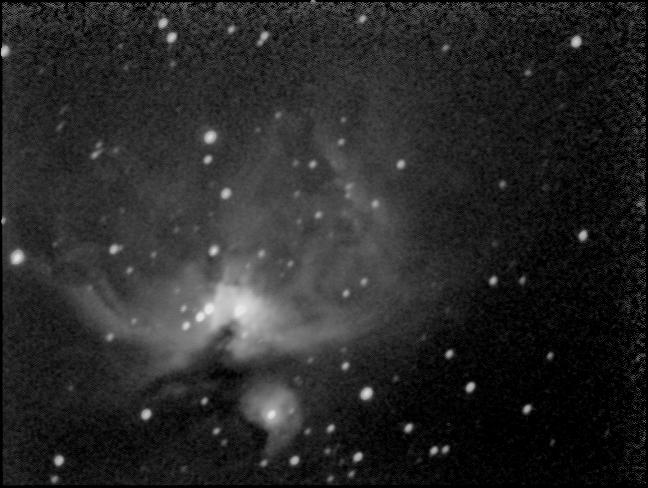
| Image by | Dennis Wigley |
| Date taken | 02/27/08 |
| Location taken | Owl Creek near Wayne, Okla. |
| Exposure time | 20 x 1 s, 28 x 1 s, 14 x 1s = 49 seconds total |
| Imaging camera | Meade DSI pro |
| Imaging scope | Meade 60mm Polaris with .5 focal reducer = 350 mm = F 3.5 |
| Guide camera | None |
| Guide scope | None |
| Mount | Meade NGC-60 |